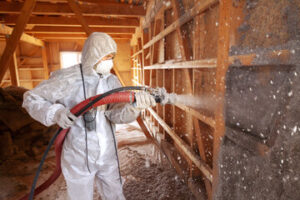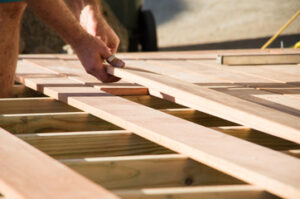Handyman Naperville IL is skilled at a variety of repair jobs, from hanging a picture to replacing a light bulb. They’re also adept at tackling larger home improvement projects like painting or drywall repair.
Begin with basic hand tools like a reliable hammer and screwdriver set, then add power tools as you expand your skillset. A quality circular saw cuts straight lines in wood and other materials; stock it with multiple blade types for versatility.
A handyman often uses fish tape to run wires and cables through walls and ceilings. This tool allows them to complete electrical phasing and wiring jobs without cutting or damaging the wall. It also helps them to install doorbells and other home electrical fixtures. It is important for a handyman to use the right type of fish tape for their project and experience level. Steel fish tapes are durable and great for long straight runs, while fiberglass tapes can navigate a range of obstacles, including tight bends and insulated walls.
A quality fish tape should have clear and accurate measurement markings, be easy to handle, and have a low-friction case design. It should also be able to deliver smooth operation for payout and rewind. A fish tape with a loop at the end can help prevent it from getting stuck in existing wire or becoming lost while you’re pulling it. It’s also helpful to have a wire-pulling lubricant available for the job.
Another tip for using fish tape is to plan out how far you want to pull it before you start. This will help you know when you’re approaching an obstacle or reaching your end point. It’s also a good idea to have a piece of tape handy to mark your spot so you don’t lose track of where you’re supposed to be going. If you’re working in a dark area, you can also consider a fish tape with a LED light that illuminates your work space.
Electrical Tape
If you’re a handyman, you need to have some electrical tape in your toolbox. This essential item can help you with a wide range of tasks, from repairing minor electrical wire damage to preventing pipes from freezing in winter. However, it’s important to know how to use electrical tape properly to ensure that you’re getting the most out of this helpful tool.
Electrical tape is different from other types of adhesive tape, as it’s designed specifically to insulate wires and materials that conduct electricity. It also has heat resistance and other qualities that make it a perfect choice for various electrical applications. This makes it an essential item for any electrician, but it’s important to understand how to use it properly in order to get the most benefit out of it.
Many people mistakenly think that electrical tape is the same as duct tape, but there are some significant differences. For example, electrical tape is rated to resist abrasion, moisture, and cold temperatures. It also has better dielectric strength than duct tape, meaning it can be used to insulate and protect electrical connections.
When using electrical tape, you should be sure that all power to the area is turned off before beginning. This is crucial to ensuring that you don’t accidentally experience an electric shock while binding wires. In addition, it’s a good idea to prioritize electrical tape that has been UL Listed, which means that it has been tested and approved for use based on national safety standards.
Circular Saw
The circular saw is one of the most powerful power tools a handyman can own. It is a versatile woodworking tool that can be used to make a variety of cuts in both soft and hard materials. It is important to understand how to properly use this tool to avoid injury and damage to the workpiece.
Before you begin working with a circular saw, familiarize yourself with the specific model’s features and safety instructions. It is also a good idea to wear appropriate safety equipment, including protective eyewear and ear protection. Before you start cutting, be sure that the area is clear of any debris and that you are working on a stable surface. It is also a good idea to mark the cut line with a pencil and use a tape measure to ensure accuracy.
Some high-end models of circular saws come with laser guides that project a light ahead of the blade to help with straight cuts. They also feature electric brakes that slow the blade faster when you release the trigger. If you are planning on using a circular saw often, it is worth investing in a professional-grade model with these features.
The speed at which the saw’s motor can spin its blade is measured in revolutions per minute (RPM). The higher the RPM, the more quickly the saw can cut through materials. A high-quality saw with a maximum speed of 4000 RPM is suitable for most projects.
Hammer
A hand tool consisting of a weighted head fixed to a long handle that is swung to deliver an impact. Hammers are used for a wide range of driving, shaping and breaking applications in fields such as carpentry, blacksmithing and warfare. They can also be used for acoustic work such as striking gongs and other percussion instruments. Hammer designs vary from ancient to modern, with many modifications intended to optimize their utility in a variety of situations. For example, hammers designed for use in tight spaces often have short handles and large heads for maximum efficiency of movement and energy transfer. Hammers designed for use in demanding conditions may be made with shock-absorbing materials or have varying angles to reduce fatigue on the hands.
A hammer can be used to beat metal into shape, break apart ice, or pound a nail into wood. Some hammers have one round face and others have two flat or wedge-peen faces for slamming into or pulling out metal (see cross-peen hammer, blacksmith’s hammer). An engine hammer is a short-handled hammer originally designed to be an essential component of a railroad engineer’s toolkit. A sledge hammer is designed for use against very hard and heavy objects to split or crush them.
A hammer is used to make an announcement at an auction. If an item goes “under the hammer” it means it is being sold. It is also used to describe something that has reached a certain standard or quality: “That collection really came up to the hammer”; “These books certainly went under the hammer.”
Screwdrivers
Screwdrivers are the tools a handyman uses to install or remove hardware, such as screws and nails. They come in many different types and sizes, from tiny jewelers’ screwdrivers to large ones used in automotive frame assembly.
A common type of screwdriver is a flathead screwdriver. It has a blade that fits into a slot in the screwhead and can be turned by hand or with a ratchet device, which adds leverage. This type of screwdriver is useful in removing or installing plate covers over outlets and switches, as well as in furniture-construction projects.
Another type of screwdriver is a hex head screwdriver, which has a hexagonal shaft that can fit into a wrench to increase the torque applied to the fastener. It is often used in electronics, because it can be turned at a higher RPM than other screwdrivers.
Other screwdrivers have interchangeable bits, such as phillips, pozidriv, square, star, and security or tamper-proof bits, that can be used to tighten or loosen specific types of fasteners. The bit size is indicated by a number stamped on the shank (shaft) or handle of the screwdriver. The handle is usually made of wood or metal, and may be round, hexagonal, or square in cross section to improve grip. It is also possible to find screwdrivers with a magnetized head or tip that can help reduce the likelihood of dropping the screwdriver in a small space.
Pliers
Pliers are the Swiss Army knives of gripping tools – they’re perfect for clamping down on all sorts of objects, from tiny wires to hefty nuts and bolts. Their jaws can also twist and bend, making them ideal for those tricky tasks that you just can’t quite manage with your bare hands.
There are several different types of pliers, each designed for a specific purpose. For example, needle-nose pliers have delicate, curved jaws that are perfect for grasping small items or tightly gripping round objects like rods and pipes. Insulated combination pliers, on the other hand, are specifically designed to be used when working with electricity – their handles are coated in non-conductive materials that help protect against electric shock.
The jaws of a pair of pliers are often reinforced to ensure durability and strength, and they can vary in shape from straight to angled. They are also usually textured rather than smooth to prevent slippage. Some pliers, such as channellock pliers, are adjustable so that their parallel jaws can be fitted to any object and can be locked in place by pushing down on the handles.
Other pliers have built-in cutters for snipping wires or small bolts, eliminating the need to use separate tools. And crimping pliers have jaws that are designed to be squeezed together to create a crimp on an item, such as a wire or hose.


